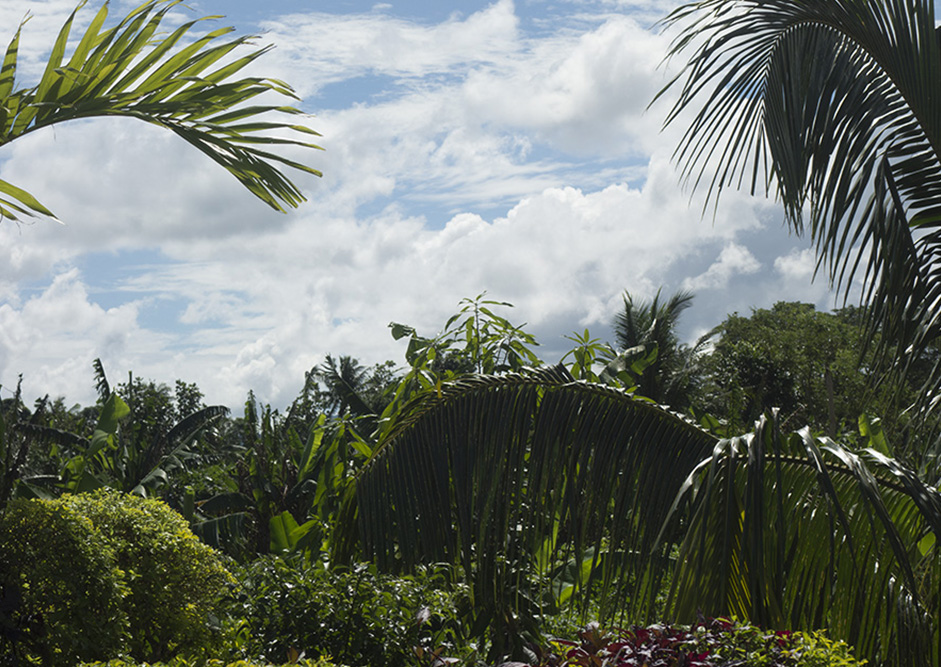
This is the forth article in a series by Interaction Designer and Jury member Matteo Rostagno, who shares with us his adventures discovering the web design scene across the world. In the last installment, we left Matteo in Vietnam, here he continues his traveling tales in Fiji.
I was very curious about understanding how the digital industry works in a remote place like the Fiji islands. Unfortunately though, bad weather and timing played against us: we were able to get in touch with Atish only on our last day. However, that didn't stop us from chatting about his country! After a ping-pong of emails, we finally arranged a Skype call and what follows summarizes our conversation. Atish is the Creative Director of a company named Creative Design Fiji, with over 15 years of experience in design, UX and online marketing. Creative Design Fiji is a tight-knit agency involved in everything concerning digital, working with mid to high-end clients, which include resorts, adventure tourism providers, spas and other niche businesses.

Atish began by explaining that Fiji started breaking into the digital design market recently. “With the expansion of some renowned big brands and thanks to new opportunities to access the global industry, the market is reflecting new [global] trends and is shaping up to conform. However, as with every growing field, budgets are sometimes limited,” he says.
With the expansion of some renowned big brands and thanks to new opportunities to access the global industry, the market is reflecting new [global] trends and is shaping up to conform. However, as with every growing field, budgets are sometimes limited
What I get is that Fiji is recovering from an up-and-down period for the economy. In September 2002, the government announced a 20-year development plan, aiming to give indigenous Fijians a greater stake in the economy. The plan envisages tax relief to businesses owned or managed by ethnic Fijians, along with greater protection for indigenous land and fishery rights, but also awarding tax concessions to large multinational companies willing to invest in Fiji. In some ways, Atish agrees, that helped the local digital industry to grown.
His team is trying to keep itself more exclusive by selecting projects they believe are worthy and strategic for the company. He said: “Client needs are paramount in our market, as our business ethos is to not only service clients, but also build long-lasting relationships with them. We have a very open working policy with clients and we pride ourselves in positive client feedback.” Their studio opens 8 hours a day for 5 days a week, however they work with many resorts and businesses in the adventure-tourism market, which means extra hours during special projects.
It's quite common for agencies to work with clients outside of Fiji. Atish’s studio has clients in Australia, New Zealand, the UK and Asia. It's actually a great opportunity to gauge consumer trends in those markets and their clients benefit from this know-how.
We then moved the conversation on to what their sources of inspiration are and what is a typical routine for them. Atish said: “There is no better inspiration than nature, and funnily enough we are based in one of the most amazing places on Earth. Our team building / brainstorming sessions are often held at the beach or with a day out surfing or paddling as a team. We literally are outside the box when it comes to motivation, and that contributes to the success of our team. Our design process is simple: we analyse, plan and implement. We have very unorthodox brainstorming sessions and this, believe it or not, gets us the best results!”
There is no better inspiration than nature, and funnily enough we are based in one of the most amazing places on Earth. Our team building / brainstorming sessions are often held at the beach or with a day out surfing or paddling as a team.
Wow. I think this is part of what they called ‘Fiji time’!

Atish said: “Good design is important, everywhere. Our norm is usually to create what hasn't been created before but that does become a challenge in today's world. We have access to the world wide web, and the possibilities are endless when it comes to staying updated with modern trends… We keep our ears to the ground at all times.” Fiji is rich in culture and history. Atish told me that they are influenced by it, but that it does not define the scope of what they do. They're lucky - he continues - to have people in their team who are very varied and talented.
Talking about talents, I was curious to understand how the training of new generations of digital designers works in his country. There are visual art programmes being taught in local universities and some interesting partnerships with companies like Atish’s. He told me that some of his team members are actually teaching at the Fiji National University, so they can ensure quality graduates join them.
As a small market, the design community is not huge. There isn't much connection mainly because of competition, but he told me that his team are part of a movement to establish a Creative Council, which will enable designers from various sectors to connect and hopefully share ideas and experiences. They are also on track to start publishing their own online magazine Designs Fiji, which will feature a wide range of design and digitally focused content.
The current government is investing a lot into the development of technology and it has in fact opened a lot of doors for new emerging digital markets. Atish believe Fiji has a lot of promise and the limits are endless and I believe so too.
Bula to everyone!
